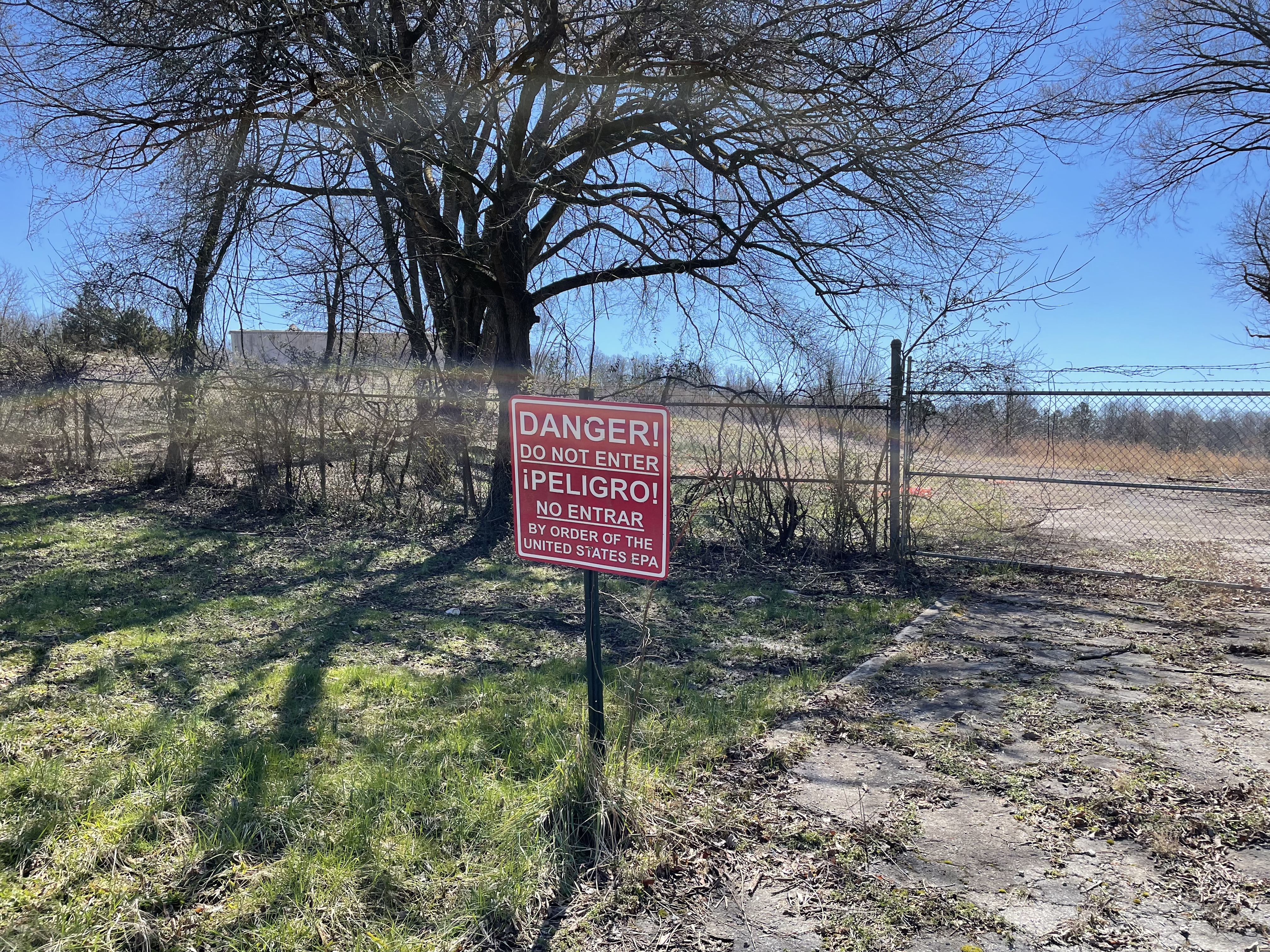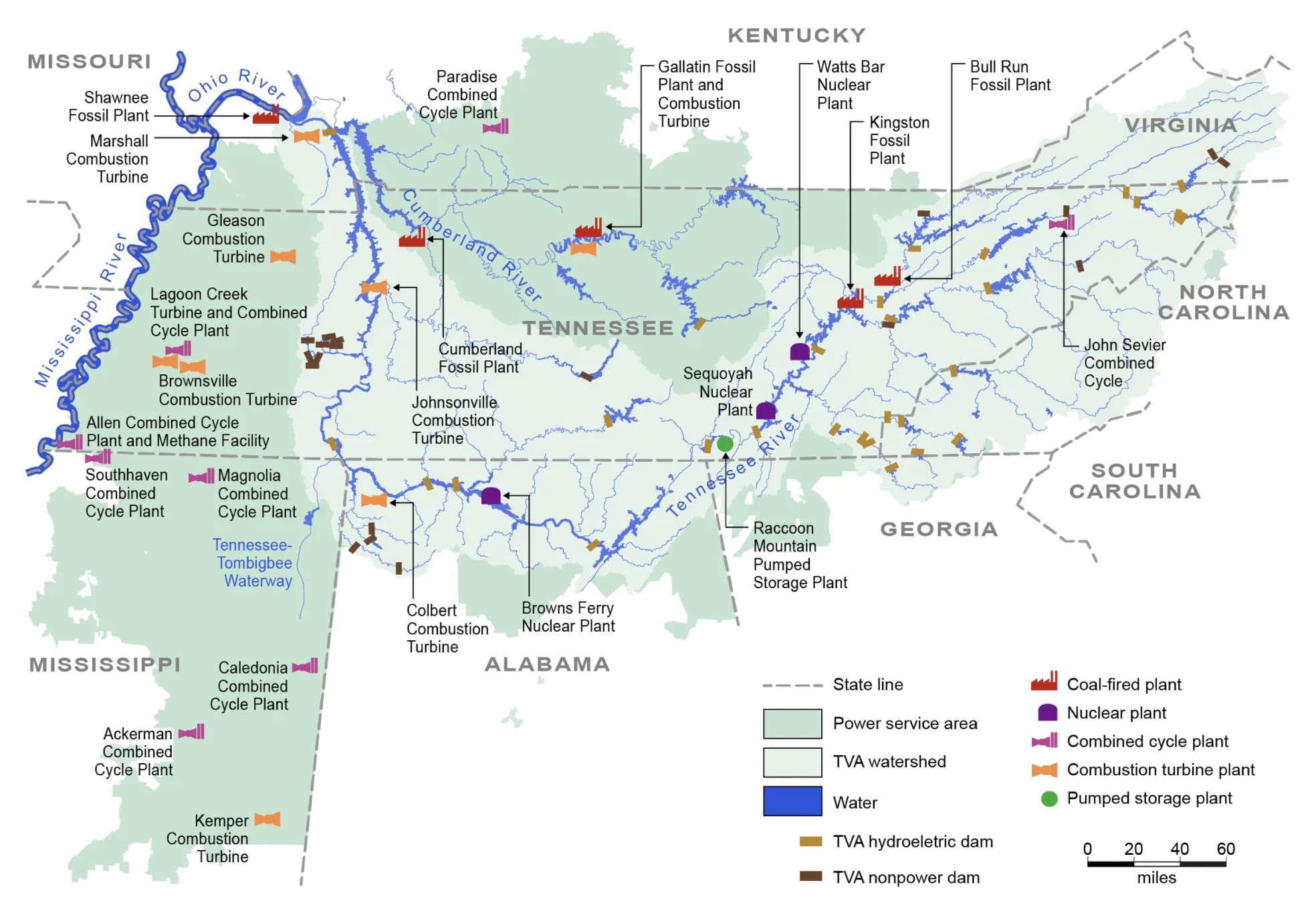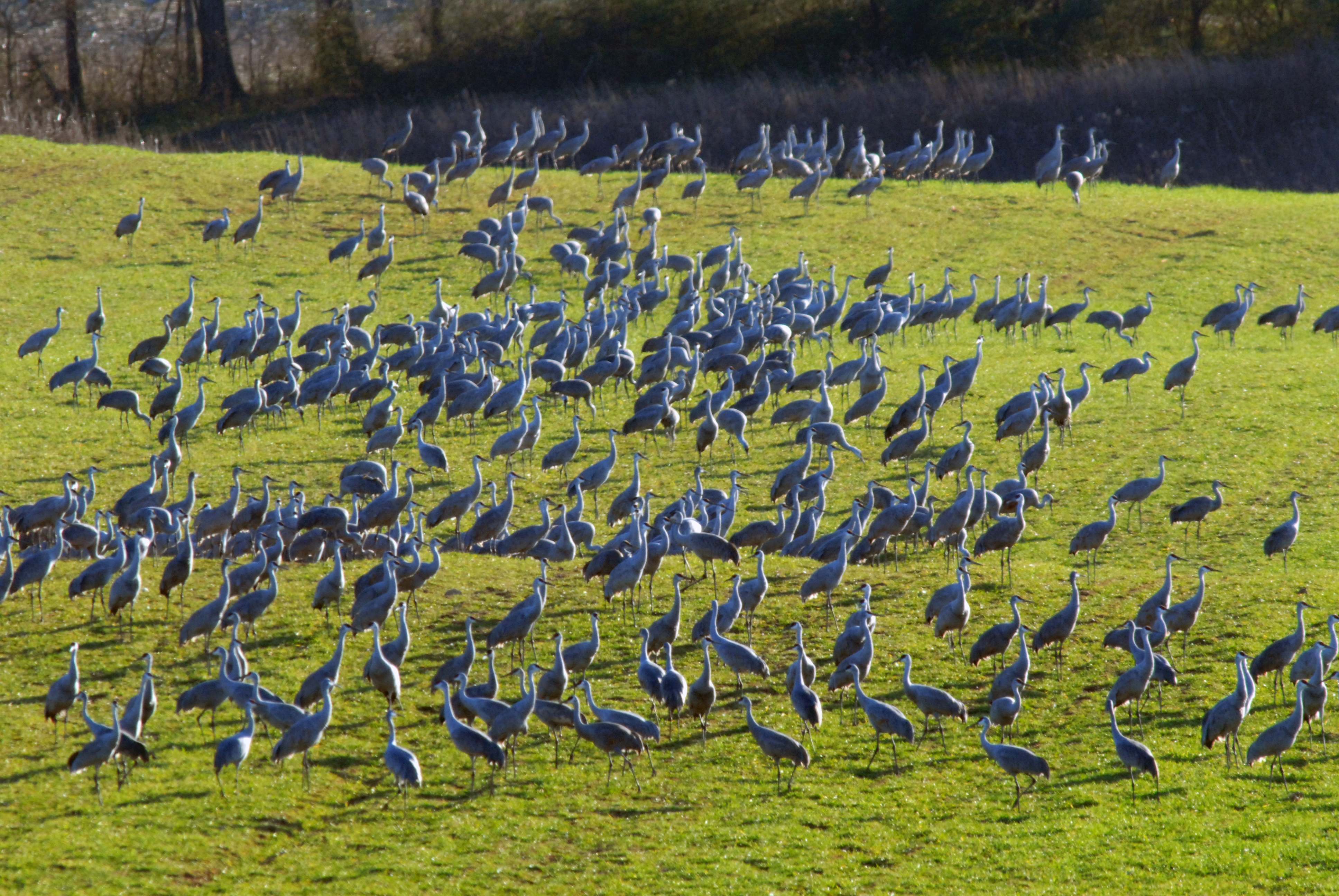News (799)
Children categories
ES! Initiatives (74)
EarthSolidarity!™ Initiatives are endeavors to which anyone can contribute in deed as well as in spirit, that
- minimize waste and environmental impacts
- increase community resilience
- respect and protect ecosystem processes and all forms of life
- contribute to good living conditions for everyone around the globe
- affirm and celebrate our interdependence and interrelatedness in the Web of Life!
High-profile cleanup to commence on South Knoxville Superfund site, but what about the other toxic sites?
Written by Ben Pounds Smokey Mountain Smelters site is seen in this EPA file photo. Work has commenced on cleaning up this particular Superfund site, but South Knoxville residents are wondering about the fate of the other highly toxic sites along Maryville Pike.
Smokey Mountain Smelters site is seen in this EPA file photo. Work has commenced on cleaning up this particular Superfund site, but South Knoxville residents are wondering about the fate of the other highly toxic sites along Maryville Pike.
Vestal community leans into future of multiple South Knoxville Superfund sites
KNOXVILLE — City residents are discussing the future of the Vestal community’s toxic sites after a long history of industrial use and activism that recently led to federally funded action to clean up at least one infamous Superfund site.
Vestal community resident Cathy Scott shared the history of each of these sites near Maryville Pike at South Knox Community Center during two Vestal Community Organization meetings related to the cleanup of multiple Superfund sites on the south side of the city.
She said in an email to Hellbender Press that much of her information came from John Nolt, formerly of the University of Tennessee Philosophy Department and author of the essay “Injustice in the Handling of Nuclear Weapons Waste: The Case of David Witherspoon Inc.,” which is chapter three of the book “Mountains of Injustice: Social and Environmental Justice in Appalachia.”
While the EPA is focusing on the Smokey Mountain Smelter site, Scott, Nolt and others have discussed other properties and their effects on nearby watersheds. The sites are all connected to the Witherspoon family. They are at are at 1508 Maryville Pike; 1630 Maryville Pike and adjacent land; 901 Maryville Pike and 4430 Candoro Ave. The meetings took place Feb. 13 and 22.
“It was a phenomenal accomplishment of community collaboration,” Eric Johnson, president of Vestal Community Organization, said of the two meetings.
The real Wild Ones and others are geared for a Chattanooga symposium
Written by Thomas FraserThe Tennessee Valley Chapter of The Wild Ones is accepting registrations for the spring workshop and symposium at the University of Tennessee, Chattanooga University Center, set for March 17 and 18.
The nature journaling workshop is Friday afternoon, March 17, and will be conducted by Jannise Ray, author of “Ecology of a Cracker Childhood.”
The symposium takes place on March 18. Speakers include:
- A keynote address by Thomas Ranier, landscape architect and author of Planting in a Post-Wild World.His talk is titled “The Residential Garden in a Post-Pandemic World.”
- Janisse Ray, Author of Ecology of a Cracker Childhood, will give a talk titled “Why the Climate Needs Trees and Why Every Tree Counts.”
- Kristen Wickert, Social Media Educator, and Plant Pathologist, will speak on “Fungi and their Relationship with Plants.”
- Leslie Edwards, the author of The Natural Communities of Georgia, speaking on the Fascinating Communities of NE Georgia and SE Tennessee: From Sandstone Cliffs to Cedar Glades.
- Adam Bigelow, owner, and operator of Bigelow’s Botanical Excursions, speaking on “Native Plants for the Vegetable Garden.”
The Wild Ones will hold their Native Plant Sale and Expo at the First Horizon Pavilion on March 25. Ten regional native plant nurseries will participate, along with several local and regional exhibitors and vendors. Food will be available from food trucks.
The Wild Ones is a national organization focused on native plants and natural landscaping. The Tennessee Valley Chapter is organized in Southeast Tennessee.
— Ray Zimmerman
Updated: Her Oak Ridge story is finally told in a federal space

OAK RIDGE — For the month of April 2023, the exhibition can bee seen, Thursdays and Fridays from 10 a.m. to 2 p.m. and Saturdays from 10 a.m. to 3 p.m., at the Oak Ridge History Museum, which is housed in the Midtown Community Center at 102 Robertsville Road, Oak Ridge, TN. That building itself is a significant landmark of Oak Ridge history. Constructed 1944-45, it has been used as a bathhouse and laundry, a hangout for students, a senior center, the Oak Ridge Convention & Visitors Bureau, and office of the Oak Ridge Heritage and Preservation Association. Many long-term Oak Ridgers refer to it simply as the ”Wildcat Den,” harking back to the time it was home base of the high school’s football team, the Oak Ridge Wildcats that were national champions in 1958.
NORRIS — The W. G. Lenoir Museum in Norris Dam State Park will be hosting “HerStory: A Photography Exhibition of Women in the Secret City.” The exhibit will open on March 1, and be on display through the month in honor of Women’s History Month.
Constructed by the Civilian Conservation Corps (CCC) and opened in May 1936, Norris Dam State Park was managed by the Tennessee Valley Authority for 18 years prior to becoming a Tennessee State Park in 1953. Oak Ridge’s selection for the Manhattan Project was, in part, due to rural electrification that Norris Dam accomplished.
During the early 1940s, the park was closed to the public and the CCC vacation cottages winterized to house Manhattan Project workers. Later serving as a popular recreation destination for the growing government town, Norris Dam State Park continues to attract visitors from throughout the region. The construction of Norris Dam and Oak Ridge necessitated the relocation of countless families of the Clinch River valley by the federal government. These historical events connect these parks, and this new partnership will strive to tell the full stories of these places.
From janitors to homemakers and chemists, the women of the Manhattan Project worked hard and talked little. During WWII, Oak Ridge was a government town of 70,000 workers; primarily women who lived in a camp-like environment of barbed wire, security checkpoints, and code words. Workers were fingerprinted, interviewed, assigned a job, and given a clearance badge. Housing was limited and cramped and often unheated. Food at the cafeterias was in short supply and lines were long.
The photographs were taken by James Edward Westcott, a renowned photographer who worked for the U.S. government in Oak Ridge during the Manhattan Project and the Cold War. Westcott was one of the few people permitted to have a camera in the Oak Ridge area during the Manhattan Project. For more information call the Manhattan Project National Historical Park at (865) 482-1942.
— National Park Service
Get a free virtual science lesson in the Smokies this Thursday
A rundown about science efforts in Great Smoky Mountains National Park is set for March 2.
You can learn about myriad scientific studies ongoing in the Smokies from the comfort of your own home.
The park and Discover Life in America are presenting this virtual event from 9 a.m. until 4 p.m. Register for free on Zoom.
Attendees will “learn about a wide variety of scientific topics, from natural history and weather to geology and more, from researchers currently working in the Smokies,” according to an announcement from DLIA.
The schedule is likely to change, but a tentative schedule is available on the DLIA website.
— Ben Pounds
From the archives: One year later, a look back at a prelude to the Russian invasion of Ukraine
Written by Thomas Fraser
(From February 2022): Menacing military buildup on Ukraine borders and Orwellian denials could snuff peaceful scientific cooperation
OAK RIDGE — I went to Russia in 2000 on one of the most extraordinary trips of my life. It was a long time ago, and a generation has passed, but I was left with many enduring and positive impressions of the country and its people.
The newspaper I worked for, The Daily Times in Maryville, paid for my trip to Moscow, then to Siberia, (and back again, to my surprise) to cover a contingent of Blount County politicos/bureaucrats and Oak Ridge DOE types visiting a far eastern Russian town, Zheleznogorsk, that had long been home to both nuclear and chemical weapons processing facilities.
The goal, under the flag of Sister Cities, was ultimately geared toward introducing alternative commerce and industry to this forgotten town so the potentially catastrophic expertise would not be exported abroad. The temptation was surely there. These were people with advanced degrees who now lived in a place where a lot of people had never eaten in a restaurant.
Maryville College professor’s podcast highlights how the present is weirder than the past
Written by Robert Norris
“Historical research brings all kinds of insight into who we are in the present day as a species.”
MARYVILLE — Ever wonder how human society and culture blossomed into what it is today?
In his new podcast, “You Are a Weirdo,” historian and Maryville College professor Doug Sofer aims to help people learn just how far we’ve come as a species by embracing how the “strangeness” of the present day would be considered even more vastly weird by the historical standards of the past.
“Real history is a process of interpretation — of understanding the past based on evidence” Sofer said. “Good history is equally immersive; it gets you out of your skin.”
So far, Sofer has immersed his audience in interpreting and understanding topics ranging from why tea is considered a distinctly British beverage, despite being grown in Asia, to why jokes have a short shelf life depending on the decade they are told.
Regardless of each episode’s topic, Sofer finds history to be “the study of human possibilities.” Sofer wants people to learn “that real, legit historical research brings all kinds of insight into who we are in the present day as a species.”
Harbingers of spring emerge. Keep faith in the wildflowers.
Written by Shelby Lyn Sanders Virginia beauty (Claytonia virginica) blooming in the woods reminds us winter is spinning away. Shelby Lyn Sanders
Virginia beauty (Claytonia virginica) blooming in the woods reminds us winter is spinning away. Shelby Lyn Sanders
First probing plants and flowers are a sign that winter always ends
There are few who would count winter as their favored time of year, and it is true that one must look harder to find the beauty in a landscape that by all accounts appears forlorn and void of life. But with about a month until the calendar tells us that it is officially spring, winter’s grip is yielding to renewal. It is a time of year that quickens the heartbeat of every naturalist.
The calls of golden-crowned kinglets begin to intermingle with those of the spring peepers, a frog so tiny that it is hard to imagine them capable of such emphatic emissions of sound, and last year’s marcescent American beech leaves preside over persistent, unfurling green lives that would be missed were it not for a careful eye and a curious heart.
The wait has been long, but worth it. With the first sighting of a blooming Virginia spring beauty, the ephemeral wildflower season begins, marking the start of another growing season, another months-long love story spent in awe of nature until the last asters of fall have gone to seed.
For every thing there is a season, and for lovers of the wild, that season is all of them.
 A bloodroot (Sangiuinaria canadensis) bloom is seen here in Norris Dam State Park on Feb. 19. John Johnson
A bloodroot (Sangiuinaria canadensis) bloom is seen here in Norris Dam State Park on Feb. 19. John Johnson
Infamous South Knoxville Superfund site will soon take first steps on long road to recovery
Written by Ben Pounds A sign warns against entry to the Smokey Mountain Smelters Superfund site off Maryville Pike in the Vestal community of Knoxville. Heather Duncan Nelson/Hellbender Press
A sign warns against entry to the Smokey Mountain Smelters Superfund site off Maryville Pike in the Vestal community of Knoxville. Heather Duncan Nelson/Hellbender Press
EPA plans to contain toxic waste and restore waterways; community group will offer guidance
KNOXVILLE — A crowd gathered in the South Knoxville Community Center to hear the Environmental Protection Agency’s long-awaited remediation plan for Smoky Mountain Smelting and its hazardous waste. Others tuned in via the Internet.
The meeting called by Vestal Community Organization took place Feb. 13. The EPA’s presentation and many questions focused on the former Smoky Mountain Smelting site at 1508 Maryville Pike near Montgomery Village Apartments.
Heather Duncan Nelson reported last year for Hellbender Press on the initial cleanup plans.
But citizens this week raised concerns about other contaminated former industrial properties along the same road. Vestal Community Organization plans to hold another meeting at 6 p.m. Feb. 22 to discuss and decide its position on these Maryville Pike properties.
“I was just thrilled and enamored by the way people were listening to the questions and answers,” said Eric Johnson with Vestal Community Organization, adding that he was referring both to the EPA and the citizens.
- superfund sites in knoxville
- smoky mountain smelters
- south knoxville superfund site
- ben pounds
- montgomery village apartments
- heather duncan superfund site
- smoky mountain smelting
- epa and knoxville superfund sites
- vestal community organization
- vestal knoxville
- south knoxville
- amelia parker
- witherspoon property knoxville
- maryville pike
‘Egregious’ abuse of power: Judge slams TWRA falcon seizure and owner’s prosecution
Written by Anita Wadhwani Lamar bestows a kiss on one of her raptors. John Partipilo via Tennessee Lookout
Lamar bestows a kiss on one of her raptors. John Partipilo via Tennessee Lookout
Judge rules that Tennessee Wildlife Resources Agency grossly overstepped its bounds following citizen complaint
This story was originally published by Tennessee Lookout.
NASHVILLE — Holly Lamar, a master falconer and owner of a Nashville “bird experience” business, has a story to tell about each one of her 13 captive-bred birds of prey.
The story behind Faith, a 7-year-old peregrine falcon, is tied to a particularly rough patch for Lamar, who experienced success as a Grammy-nominated songwriter, then lost nearly everything. The 20-day-old chick arrived just after Lamar fell victim to a financial scam that wiped out earnings from her music career.
She picked the name “Faith” to symbolize the feelings of trust she was trying to regain in her life — and as a nod to Faith Hill, the country singer who recorded “Breathe,” a 1999 megahit co-written by Lamar.
Faith, the falcon, is now dead — one of 13 falcons seized by officers with the Tennessee Wildlife Resources Agency in a sweeping August search of Lamar’s home and property that a Nashville judge later characterized as “egregious,” an “abuse of the law” and a violation of Lamar’s constitutional rights.
Government Accountability Office: TVA lagging in climate change adjustments
Written by Adam Goldstein TVA service area and power generation assets. Tennessee Valley Authority (TVA) | GAO-23-105375
TVA service area and power generation assets. Tennessee Valley Authority (TVA) | GAO-23-105375
GAO report concludes TVA is flat-footed on climate-change risks to infrastructure
This story was originally published by Tennessee Lookout.
WASHINGTON — Extreme weather patterns have sparked several improvements to the climate resiliency of Tennessee Valley Authority electrical infrastructure over the past two decades.
A report from a government watchdog, however, found the huge utility still has work to do in mitigating climate hazards to the regional power grid. (Bitter cold around Christmas led TVA to implement rolling blackouts).
“TVA has taken several steps to manage climate-related risks,” the Jan. 30 report from the Government Accountability Office said. “However, TVA has not conducted an inventory of assets and operations vulnerable to climate change, or developed a resilience plan that identifies and prioritizes resilience measures to address specific risks.”
One issue: The Southeast has experienced a period of accelerated warming since the 1960s. Among cities in the region, 61 percent are experiencing worsening heat waves, a percentage greater than anywhere else in the country, according to the GAO.
The report came in response to a five-part joint request for information on the climate resiliency of U.S. infrastructure, from U.S. Senate Energy and Natural Resources Committee Chair Joe Manchin III of West Virginia and Environment and Public Works Committee Chair Tom Carper of Delaware. The two Democrats sent their request to the GAO on May 13, 2019.
Feds seek comment on proposed nuclear-fuel site in Oak Ridge
Written by Ben PoundsOAK RIDGE — The Nuclear Regulatory Commission is seeking public input on the scope of its environmental review of TRISO-X LLC’s proposed nuclear fuel fabrication facility to be built in Oak Ridge (as reported by Hellbender Press already last April in the context of the decade-long struggle to prevent environmental damages from a proposed power line that would also have degraded the recreational experience of the North Boundary Greenway).
Comments are due Feb. 14. TRISO-X has proposed the facility for the Horizon Center on the western side of Oak Ridge. The company, a wholly owned subsidiary of X-Energy LLC, has applied for a license to construct and operate the facility to manufacture high-assay low-enriched uranium fuel for advanced reactors. Along with a safety and technical review, the NRC staff will develop an environmental impact statement to analyze the proposed facility’s potential impacts.
See the TRISO-X review, as well as non-sensitive parts of the license application, on the NRC website. A notice of intent to develop an environmental impact statement was published Dec. 16 in the Federal Register.
Related article: Oak Ridge environmentalists successfully lobbied to reroute intrusive power lines
Oak Ridge environmentalists successfully lobbied to reroute intrusive power lines
Written by Ben Pounds This map shows several of the various options that were proposed over the years for a new power line to the Horizon Center. Options numbered 1 here would have severely impacted the North Boundary Greenway. Options 1 and 2 also would have diminished the ecologic values of the Black Oak Ridge Conservation Easement. The now authorized option 5 will tap into the existing 161 kilovolt TVA power line at a new substation to be built on the south-east side of Oak Ridge Turnpike (TN-95). City of Oak Ridge Electric Department
This map shows several of the various options that were proposed over the years for a new power line to the Horizon Center. Options numbered 1 here would have severely impacted the North Boundary Greenway. Options 1 and 2 also would have diminished the ecologic values of the Black Oak Ridge Conservation Easement. The now authorized option 5 will tap into the existing 161 kilovolt TVA power line at a new substation to be built on the south-east side of Oak Ridge Turnpike (TN-95). City of Oak Ridge Electric Department
Conversations, letters, alliances and action prompted electrifying win for East Tennessee citizens
OAK RIDGE — After a grassroots citizen effort highlighted the fact new electric lines would mar habitat and popular hiking trails, the city plans to put them elsewhere.
The move came after objections raised by East Tennessee environmental groups, previously reported by Hellbender Press, to protect the land along the North Boundary Greenway, a wide gravel path used by hikers and cyclists. The new route goes down Novus Drive’s median, starting south of State Route 95.
Contractors aren’t done building the Novus Drive route, but city staff made the new route clear in December when asking for funding. Oak Ridge City manager Mark Watson stated the new lines and substation need to be ready for the proposed TRISO-X nuclear fuel facility by December 2024.
Obsolescence meets absurdity in parking-garage design debates
Written by Kevin J. Krizek and John Hersey The Pryor Brown Transfer Company and garage is shown in 1936 on West Church Avenue in downtown Knoxville. Established in 1929, it is reputedly the first full-service parking garage in the U.S., and now faces demolition after years of neglect and disuse. Thompson Photograph Collection, McClung Historical Collection
The Pryor Brown Transfer Company and garage is shown in 1936 on West Church Avenue in downtown Knoxville. Established in 1929, it is reputedly the first full-service parking garage in the U.S., and now faces demolition after years of neglect and disuse. Thompson Photograph Collection, McClung Historical Collection
Wasted space or community asset? As urban space dwindles, debate gears up over utility of parking garages
This story was originally published by The Conversation. Kevin J. Krizek is professor of environmental design at University of Colorado Boulder. John Hersey is a teaching assistant professor of environmental design at University of Colorado Boulder.
For the past century, the public and private sectors appear to have agreed on one thing: the more parking, the better.
As a result, cities were built up in ways that devoted valuable space to storing cars, did little to accommodate people who don’t own cars and forced developers to build expensive parking structures that increased the cost of living.
Two assumptions undergird urban parking policy: Without convenient parking, car owners would be reluctant to patronize businesses; and absent a dedicated parking spot for their vehicle, they’d be less likely to rent and buy homes. Because parcels of urban land are usually small and pricey, developers will build multistory garages. And so today, a glut of these bulky concrete boxes clutter America’s densely populated cities.
We have been studying urban development and parking for decades. The car’s grip over city planning has been difficult to dislodge, despite a host of costs to the environment and to the quality of life for many city dwellers.
Potentially toxic Oak Ridge landfill won’t be built until cleared by operator’s water research
Written by Ben Pounds
Potential water runoff issues stall future Oak Ridge landfill construction
OAK RIDGE — A landfill intended to hold potentially toxic debris from the demolition of legacy Oak Ridge research facilities is moving forward but construction won’t start until it is definitively determined whether the site could pollute ground and surface water.
As reported previously by Hellbenderpress, environmentalists fear toxins leaking out of the proposed landfill could contaminate waterways and make their way into fish that people might catch downstream. The landfill’s contractor, however, said leaving buildings full of toxic residue standing may be more dangerous for workers and nearby residents and the landfill will help get the buildings quickly demolished. The contractor is doing a mock-up study this year to see how best to handle water issues on the future landfill site.
This summer, the contractor United Cleanup Oak Ridge LLC will choose a subcontractor and do field work. Ben Williams, the Department of Energy’s public affairs specialist, said roads and utilities will need to move to get the site ready at that time. But UCOR stated it won’t build the landfill until after a water study spanning “two wet seasons,” beginning later this year.
- ornl
- oak ridge landfill
- oak ridge legacy
- oak ridge, tn
- department of energy oak ridge
- tennessee citizens for wilderness planning
- oak ridge pollution
- united cleanup oak ridge llc
- toxic waste
- toxic waste disposal
- landfills
- oak ridge fishing
- department of energy
- groundwater cleanup
- y12
- southern environmental law center
- selc
- virginia dale
- bear creek
- clinch river
- water quality
- environmental management waste management facility
- emwmf
- environmental management disposal facility
- emdf
Migrating sandhill cranes descend on Southeast
Written by Ray Zimmerman During winter migration, visitors to Hiwassee Wildlife Refuge can view thousands of greater sandhill cranes. Tennessee Wildlife Resources Agency via Appalachian Voices
During winter migration, visitors to Hiwassee Wildlife Refuge can view thousands of greater sandhill cranes. Tennessee Wildlife Resources Agency via Appalachian Voices
Beyond festivals, sandhill cranes pass through Southeast in increasing numbers
BIRCHWOOD — Every year in mid-January, a few thousand people gather here for The Sandhill Crane Festival because the cranes have returned. The community center at Birchwood is filled with vendors selling wildlife art or promoting conservation. The nearby Cherokee Removal Memorial at Blythe Ferry offers a chance to celebrate Cherokee culture and learn the story of indigenous people who were taken from their homes and sent on a long journey to Oklahoma.
Meanwhile, there are opportunities to see and appreciate these amazing birds through February in East Tennessee and beyond.
At least 20,000 cranes gather or pass through Hiwassee Wildlife Refuge, having come from their nesting grounds in southern Canada and the upper Midwest to winter here in the American South. Many spend the winter there, but some will continue southward to Okefenokee Swamp in Georgia and the Gulf Coast.
More...
East Tennessee SPJ chapter plans roundtable with state legislators
Written by Thomas FraserKNOXVILLE — The East Tennessee Chapter of the Society of Professional Journalists once again will partner with the League of Women Voters Knoxville/Knox County to hold the annual legislative forum of the Knox County delegation.
The date is Saturday, Jan. 28, from 9-10:30 a.m. at the East Tennessee History Center, 601 S. Gay St., in downtown Knoxville. Jesse Mayshark, an ETSPJ board member and co-founder of Compass Knox, will serve as moderator.
Hellbender Press readers are encouraged to submit possible environment-related questions for the legislators to This email address is being protected from spambots. You need JavaScript enabled to view it..
Coffee and breakfast bagels and pastries will be available at 8:30 a.m. and are free while they last. The event is open to the public, and the wearing of masks is optional.
— East Tennessee Chapter of the Society of Professional Journalists
Mad about saffron: Cardinals of color fly through Appalachian winter
Written by Stephen Lyn Bales A rare yellow cardinal is seen at a residence in Roane County this winter. Catherine Reddick
A rare yellow cardinal is seen at a residence in Roane County this winter. Catherine Reddick
As yellow cardinals proliferate, are we watching evolution unfold in real time?
HARRIMAN — During the pandemic, when isolating at home became a necessity, birdwatching and bird feeders soared in popularity. Watching our avian friends come and go is entertaining, and sometimes quite surprising.
When it comes to songbirds, especially at this time of year, the northern cardinal is perhaps the most recognized and beloved.
It is the state bird of no less than seven states: Illinois, Indiana, Kentucky, North Carolina, Ohio, Virginia and West Virginia.
It’s also the nickname of more sports teams than any other icon. There are the St. Louis Cardinals in baseball, and the Arizona Cardinals in professional football. In the NCAA, there are the Louisville Cardinals and 17 other colleges that sport the red mascot, as well as a gaggle of high school teams across the country.
Since we were children, we have all known what a male northern cardinal looks like. He’s bright red. Right? Yes, unless he’s bright yellow!
Finding a golden treasure usually requires a long arduous quest through terra incognito.
Water and waste on TVA agenda as utility plans Bull Run shutdown
Written by Ben Pounds Bull Run Fossil Plant in Claxton, Tennessee, was originally commissioned 55 years ago but TVA is now soliciting public input on the best way to shut down operations. Tennessee Valley Authority
Bull Run Fossil Plant in Claxton, Tennessee, was originally commissioned 55 years ago but TVA is now soliciting public input on the best way to shut down operations. Tennessee Valley Authority
TVA solicits public input following release of environmental assessment for Bull Run Fossil Plant decommission
CLAXTON — Tennessee Valley Authority plans to close its Bull Run Fossil Plant (BRF) in Anderson County, but it’s still looking for public input on what comes next.
“As a large, inflexible coal unit with medium operating costs and a high forced outage rate, BRF does not fit current and likely future portfolio needs,” the federal utility said in a draft Environmental Assessment.
TVA is looking at three different options for the future of the structures still standing on the site by the Clinch River near Oak Ridge: taking down all structures; taking down some of them; or leaving everything standing. A recent report lays out the environmental consequences of each of these actions. The report, in draft form, is against that third choice, listing it as only an option for the sake of comparison.
“If the facility is left in the “as-is” condition, it likely would present a higher risk than Alternatives A or B for the potential to contaminate soil and groundwater as systems and structures degrade. As such, this alternative is not a reasonable alternative,” the draft states.
TVA stated its considering removing “all or most of the buildings and structures” on a 250-acre area. After closing the plant, but before any demolitions, TVA will begin by removing components that may be used at other TVA sites, draining of oil and fluids from equipment, taking ash out of the boilers, removing information technology assets, removing plant records and other tasks.
The Bull Run Environmental Assessment is 170 pages long and available for public review. It doesn’t directly tackle the coal ash storage conundrum that has grabbed the attention of politicians, nearby residents and environmental activists, because that issue involves separate regulations.
The electric-vehicle revolution brings environmental uncertainty at every turn
Written by Tim Lydon
As demand for electric vehicles soars, several roadblocks have emerged
This article was originally published by The Revelator.
Manufacturers, governments and consumers are lining up behind electric vehicles — with sales rising 60% in 2022, and at least 17 states are considering a California-style ban on gas cars in the years ahead. Scientists say the trend is a key part of driving down the transportation sector’s carbon emissions, which could fall by as much as 80% by 2050 under aggressive policies. But while EVs are cleaner than gas cars in the long run, they still carry environmental and human-rights baggage, especially associated with mining.
“If you want a lot of EVs, you need to get minerals out of the ground,” says Ian Lange, director of the Energy and Economics Program at the Colorado School of Mines.
